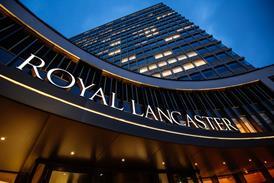February 1 - The director general of the ITER Organization, Osamu Motojima, and the directors of all seven Domestic Agencies this week signed a Memorandum of Understanding that provides for the use of one single Logistic Service Provider in order to assur
The signing of this Memorandum is the culmination of a joint effort that started years ago involving staff from the ITER Organization and the Domestic Agencies.
"It was really impressive to see this international tender evolve," the head of the ITER Procurement Division,Francoise Flament, said after the signature.
"It was a bit like a big puzzle that, looking at all the pieces spread across the table, seemed impossible to complete in the beginning. But thanks to a great collaborative spirit, the legal framework covering every aspect of the transport of ITER components - including storage, insurance, handling, and customs management - will facilitate the complex logistics of the worldwide procurement of ITER components, and enable us to ensure their safe arrival on site."
HLPFI understands that the tender process for the "Logistic Service Provider" is ongoing and bids are currently being evaluated by the ITER Organization and the Domestic Agencies in order to award the contract by May of this year.
Scientists from all over the world have come together in ITER to work toward a lofty goal: harness the energy produced by the fusion of atoms to help meet mankind's future energy needs.
ITER is a large-scale scientific experiment intended to prove the viability of fusion as an energy source, and to collect the data necessary for the design and subsequent operation of the first electricity-producing fusion power plant.
Launched as an idea for international collaboration in 1985, the ITER Agreement includes China, the European Union, India, Japan, Korea, Russia and the United States, representing over half of the world's population.
Site preparation at Cadarache in Southern France began in January 2007, representing an important first milestone in the ten year-long construction process to build ITER.
Key components will be manufactured in the seven member states and shipped to France by sea. From the port in Berre l'Etang on the Mediterranean, the components will be transported by special convoy along the 104 km of the ITER Itinerary to Cadarache. The exceptional size and weight of certain of the components made large-scale public works necessary to widen roads, reinforce bridges and modify intersections. Cost were shared by the Bouches-du-Rhône department Council and the French State. Work on the Itinerary was completed in December, 2010.
During the ITER construction phase, 200 of these exceptional convoys will travel by night at reduced speeds along the ITER Itinerary, bypassing 16 villages, negotiating 16 roundabouts, and crossing 35 bridges. The first test convoys are planned for June, 2011.
















